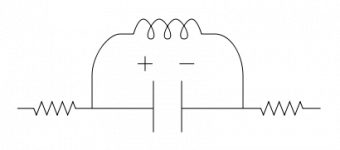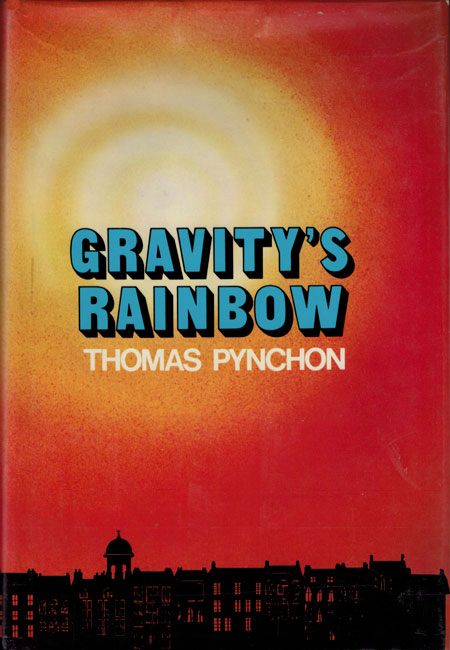Bleeding Edge
by Thomas Pynchon (2013)

2024 reads, 18/22:
“Sometimes, down on the subway, a train Maxine's riding on will slowly be overtaken by a local or an express on the other track, and in the darkness of the tunnel, as the windows of the other train move slowly past, the lighted panels appear one by one like a series of fortune-telling cards being dealt and slid in front of her.”
Recently, I had the pleasure of attending a friend's thirtieth birthday on a night cruise that sailed on the Hudson River. On this humid summer evening, the city loomed over us, and I caught myself multiple times just staring at the city skyline; in particular, the checkerboarded city windows reminded me of a server room. All the nodes forming one large unit, signifying one breathing, living, city.
New York, I Love You but You're Bringing Me Down
Bleeding Edge takes place in New York City in 2001, right after the dot-com bubble of the nineties, the movement from Silicon Valley to Silicon Alley. Maxine Tarnow, mother of two sons (Ziggy and Otis) and Certified Fraud Examiner, is the protagonist, while Gabriel Ice, head of computer security firm “hashslingerz,” is her antagonist; but NYC is right there the whole time, the god-like deuteragonist, looming over the novel.
This alternate NYC is dark, oozing with underworld vibes. As Maxine gets further into her investigation of Ice and his illegal activities, she uncovers more and more of his capitalistic plot. Threats loom, and she meets many others who have succumbed to the city’s shadows.
“Beneath these windows they can hear the lawless soundscape of the midnight street, breakage, screaming, vehicle exhaust, New York laughter, too loud, too trivial, brakes applied too late before some gut-wrenching thud. When Maxine was little, she thought of this nightly uproar as trouble too far away to matter, like sirens. Now it’s always too close, part of the deal.”
This book is a love letter to NYC, as the only other Pynchon book somewhat set in NYC is V., his very first. Since Bleeding Edge is the most recent novel by Thomas Pynchon, published in 2013, this may be his last work; if that’s the case, it’s interesting (and perhaps fitting) how he bookends his oeuvre with The City That Never Sleeps.
A Parallel World
But if the city is the living, breathing environment, then its doppelganger is DeepArcher, a computer program that acts as a utopian parallel world of the imperfect city. Early on, Maxine is exposed to DeepArcher, since one of its two creators (Justin and Lucas) has a daughter at her kids’ school.
“When the program is loaded, there is no main page, no music score, only a sound ambience, growing slowly louder, that Maxine recognizes from a thousand train and bus stations and airports, and the smoothly cross-dawning image of an interior whose detail, for a moment breathtakingly, is far in advance of anything she’s seen on the gaming platforms Ziggy and his friends tend to use….”
The scenes where Maxine explores DeepArcher may as well be taken straight out of Neuromancer – they are incredibly done, and it felt like Maxine and other characters were physically in this cyberspace, like in Scooby-Doo and the Cyber Chase. But here, it allows for an escape, an underworld where double lives flourish and souls replicate.
DeepArcher is even presented as a pre-capitalistic paradise (or even purgatory), where anyone can come to rest and wander for eternity, but is it what it seems? In describing these scenes, Pynchon expertly straddles the line between comforting and paranoid, and it’s this idealized version of the living, breathing, imperfect NYC that makes this utopia somewhat discomforting. In fact, it’s on Halloween night, a night of masks, costumes, and double identities, that one of Maxine’s friends says, “Children of all ages enacting the comprehensive pop-cultural moment. Everything collapsed into the single present tense, all in parallel. Mimesis and enactment.”
Gabriel Ice, who wants to acquire DeepArcher, is an interesting villain – described as “amiable geek” in college, he is now one of the remaining “nerd billionaires” from the dot-com boom. I love how his last name is a literal reference to “ice”, virtual walls in cyberspace (from, again, Neuromancer) that act as defenses, furthering the secrets that he holds. And it wouldn’t be a Pynchon book without conspiracy and paranoia. Anyone getting close to Ice either disappears or shows up dead, adding weight to the plot, and furthering the consequences for Maxine each step she takes.
“She’s lost. There is no map. It isn’t like being lost in any of the romantic tourist destinations back in meatspace. Serendipities here are unlikely to be in the cards, only a feeling she recognizes from dreams, a sense of something not necessarily pleasant just about to happen.”
And just in case you need further convincing that DeepArcher is an escape from reality, somewhere to run to, then just sound out the word.
How Do You Do, Fellow Kids?
It's funny – some say this is Pynchon’s weakest work, saying that the references are out of touch; but I think that's just the times. This is the most recent setting Pynchon has written about, and I adored the many pop culture references, e.g., Pokémon, Dragon Ball Z, even Kenan and Kel. It feels like this book is Pynchon’s love letter to the generations after him, especially his son, who grew up during this age. And continuing with the cyberspace theme, one of the DeepArcher creators even describes their software using references from the cyberpunk age:
“‘Only the framing material,’ Lucas demurely, ‘obvious influences, Neo-Tokyo from Akira, Ghost in the Shell, Metal Gear Solid by Hideo Kojima, or as he's known in my crib, God.’”
There are actually a few cyberpunk references throughout the book, maybe touching on how the politics of the Cold War and secret government doings parallel that of Gabriel Ice and his megacorporation. One character even says, “paranoia's the garlic in life's kitchen, right, you can never have too much.” Or maybe Pynchon’s son just loves Metal Gear Solid. Side note, it's the aforementioned Halloween night scene that gives one of my favorite pop culture references in the book (for obvious reasons):
“‘Fiona, nice getup, help me out, you’re supposed to be–’ ‘Misty?’ ‘The girl in Pokemon. And this is–’ Fiona’s friend Imba, who’s got up as Misty’s chronically bummed out companion Psyduck. ‘We flipped for it,’ Fiona sez.”
The Barroom Floor of History
“They gaze at each other for a while, down here on the barroom floor of history, feeling sucker-punched, no clear way to get up and on with a day which is suddenly full of holes—family, friends, friends of friends, phone numbers on the Rolodex, just not there anymore . . . the bleak feeling, some mornings, that the country itself may not be there anymore, but being silently replaced screen by screen with something else, some surprise package, by those who’ve kept their wits about them and their clicking thumbs ready.”
I’m sure the setting of 2001 NYC immediately sets off alarm bells in your head. And yeah, the September 11 attacks are a pretty central plot point to the story. The actual attack itself is quickly mentioned, which is to be expected – there’s no need for Pynchon to rehash what happened that day. But the effects of the attacks are felt reverberating throughout the novel and plot afterwards.
Pynchon books are said to take place at times when America went down the wrong path, the bifurcation of the “fork in the road America never took” (taken from Gravity’s Rainbow). Publishing this in 2013, Pynchon had at least a decade’s worth of post 9/11-trauma to pull from and deconstruct. Our reaction to the attacks, however patriotic they might have seemed, has had devastating consequences in the context of conspiracy theories and the rise of white nationalism. The aftermath, felt for years to come, is alluded to during a conversation between Maxine and another character, as they walk around the city.
“They’re up on the bridge again, as close to free as the city ever allows you to be, between conditions, an edged wind off the harbor announcing something dark now hovering out over Jersey, not the night, not yet, something else, on the way in, being drawn as if by the vacuum in real-estate history where the Trade Center used to stand, bringing optical tricks, a sorrowful light.”
The immediate reaction of September 11 as a government conspiracy mirrors that of Ice and his transgressions; that everything that’s happened so far to her, to her colleagues, to her clients, is all part of one big collusion between larger powers and darker forces. This is, and has always been, the central theme to all of Pynchon’s books. The last third of the book really embraces this darkness, with a plot becoming more and more unclear.
Bleeding Edge falls in the second camp of Pynchon books, the not-so-dense but relentlessly-shady detective story of someone just trying to find their way in a world that isn’t theirs. Maxine has similar characteristics to Doc Sportello in Inherent Vice, or Oedipa Maas in The Crying of Lot 49 – but one thing she has is children and a healthy family life, which is put on the line every time she goes investigating. Don’t be intimidated to pick this one up, but as with many Pynchon books, you might find yourself wishing for an America that could have been, instead of down here, on the barroom floor of history.
“…they settle in behind Island of Meadows, at the intersection of Fresh and Arthur Kills, toxicity central, the dark focus of Big Apple waste disposal, everything the city has rejected so it can keep on pretending to be itself, and here unexpectedly at the heart of it is this 100 acres of untouched marshland, directly underneath the North Atlantic flyway, sequestered by law from development and dumping, marsh birds sleeping in safety. Which, given the real-estate imperatives running this town, is really, if you want to know, fucking depressing, because how long can it last? How long can any of these innocent critters depend on finding safety around here? It’s exactly the sort of patch that makes a developer’s heart sing—typically, ‘This Land Is My Land, This Land Also Is My Land.’”






